The Library Catalogue, OneSearch, is the primary portal to access e-books.

This will retrieve all e-books with 1984 in the title.
If you were to choose the first item on the list and then select the "Available Online" link which will take you to the Full record as seen below:
Then under View Online - Try a Link Below! - Select from one of the options. This will take you to our Proxy (if you are off-campus) where you will need to sign in with your CUNYCredentials-firstname.lastnameNN@login.cuny.edu. For more information, please review the Remote Access FAQ.

Once you do so, select SEARCH. The can then be further filtered by using the Filter My Results feature on the left-hand pane and selecting Full-Text Online
Should you have any questions, please complete the Electronic Resources Access Form.

Note: You cannot search for individual e-book titles (for example: Pride and Prejudice) on the A-Z Database List. Try OneSearch for individual title retrieval.
JSTOR provided expanded access during the pandemic (June 2020-June 2023). Expanded access expires on June 30, 2023. CUNY will reinstate that access beginning in January 2024.You may review the Electronic Resources Status Dashboard for updates. Questions? Email: access-support@qc-cuny.libanswers.com or Open a Ticket!
JSTOR provided expanded access during the pandemic (June 2020-June 2023). Expanded access expires on June 30, 2023. CUNY will reinstate that access beginning in January 2024.You may review the Electronic Resources Status Dashboard for updates. Questions? Email: access-support@qc-cuny.libanswers.com or Open a Ticket!
JSTOR provided expanded access during the pandemic (June 2020-June 2023). Expanded access expires on June 30, 2023. CUNY will reinstate that access beginning in January 2024.You may review the Electronic Resources Status Dashboard for updates. Questions? Email: access-support@qc-cuny.libanswers.com or Open a Ticket!
JSTOR provided expanded access during the pandemic (June 2020-June 2023). Expanded access expires on June 30, 2023. CUNY will reinstate that access beginning in January 2024.You may review the Electronic Resources Status Dashboard for updates. Questions? Email: access-support@qc-cuny.libanswers.com or Open a Ticket!
 Computer users
Computer usersIn order to transfer most e-books to a mobile device, you will need an app. This app -- Bluefire Reader -- is similar to how the Kindle works, but it's specifically for e-books provided by the library. Bluefire also supports PDFs -- this means you can import any saved PDFs (such as journal articles) into Bluefire Reader.

Use the directions below to learn how to download an e-book directly to a mobile device, and how to transfer an e-book download from a computer to a mobile device.
After selecting "Download", you will be prompted to open the download in a program, generally iBooks (iOS) or Bluefire Reader. Once selected, the download will be automatically transferred to the app.
Note: You must have Bluefire Reader authenticated with your Adobe ID, but you will only have to complete this step once! Bluefire Reader will also keep track of the time left on your loan, if applicable.
